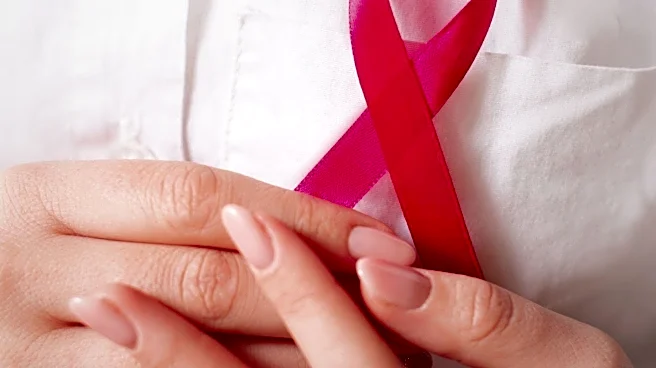What's Happening?
Eric Thomas, a columnist, provides advice on how to handle the delicate situation of sharing a close friend's terminal cancer diagnosis with a wider community. The friend, who has been diagnosed with terminal cancer,
has chosen to keep the details private initially, sharing the news only with a small group of close friends. This group is tasked with eventually communicating the diagnosis to a larger circle of colleagues and friends. Thomas emphasizes the importance of respecting the friend's wishes regarding the timing and manner of sharing the news. He suggests using compassionate and direct communication while considering the emotional impact on both the messenger and the recipients. Thomas also advises using platforms like CaringBridge.org to manage updates and communications, allowing the small group to focus on supporting their friend without being overwhelmed by inquiries.
Why It's Important?
The situation highlights the emotional and social complexities involved in sharing sensitive personal news within professional and social networks. It underscores the need for empathy and careful communication in maintaining the dignity and privacy of individuals facing serious health challenges. The advice provided by Thomas is significant as it offers a framework for navigating such situations, which can be emotionally taxing for all parties involved. By suggesting the use of designated communication channels, Thomas helps protect the emotional well-being of those tasked with sharing the news, ensuring they can support their friend effectively. This approach can serve as a model for others facing similar circumstances, promoting a compassionate and respectful handling of personal crises within communities.
What's Next?
As the friend progresses through her diagnosis and treatment, the small group will need to remain aligned with her wishes regarding communication. They may need to update the larger community as the situation evolves, ensuring that any updates are consistent with the friend's preferences. The use of platforms like CaringBridge.org will likely continue to play a role in managing communications, providing a buffer that allows the group to focus on supporting their friend. The broader community may also need guidance on how to offer support and sympathy without overwhelming the friend or her close circle. This ongoing communication will require sensitivity and adaptability as circumstances change.
Beyond the Headlines
The situation raises broader questions about how communities handle personal crises and the role of empathy in professional environments. It highlights the importance of creating supportive networks that respect individual privacy while fostering collective care. The advice given by Thomas can contribute to a cultural shift towards more compassionate communication practices, encouraging people to consider the emotional impact of their interactions. This approach can lead to healthier community dynamics, where individuals feel supported and respected during challenging times.











